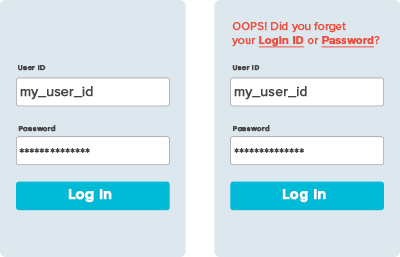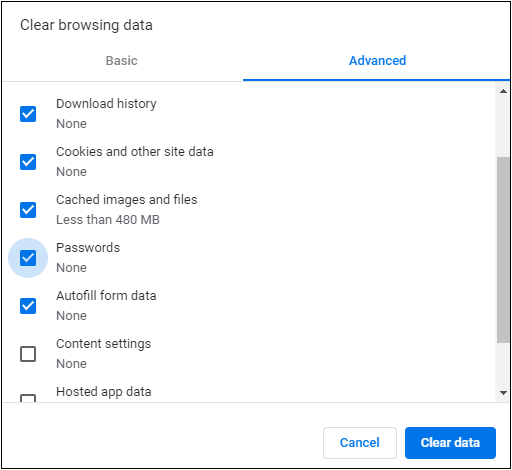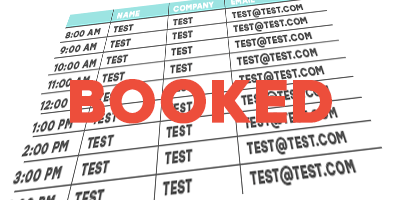We want you to get started on the right foot when setting up your Web Application Monitoring, so we put together this list of 12 things for you to remember when recording your transactions.
Our transaction script writers stay busy refining and preparing scripts made from recordings our customers make using our Transaction Recorder. While working their way through all those scripts, they have built up a lot of experience determining what works and what doesn’t.
Rather than you having to wait until after you’ve made your recording to glean some of their transaction knowledge, our script writers have compiled a list of 12 tips and suggestions for you to consider before you record your transactions.
So, without further ado.
1. Keep your Web Application Monitoring simple
Don’t try to test all of your functionality in a single transaction monitor. Testing for specific functionality allows you to get to the root cause of a problem much quicker.
For example, keep the testing for adding and removing items from your shopping cart separate from a test that confirms the checkout process. Isolating specific transactions can help you get to a resolution quicker by helping you to alert the correct people and prioritize severity.
2. Test happy paths and unhappy paths
Testing the user’s journey for the ideal scenario is important, but you need to make sure that your application is responding correctly to invalid entries and failed attempts as well.
For example, test both your successful login and your failed login attempt to make sure your users receive the correct prompts and options.

3. Practice your transaction
Practicing your transaction may sound silly, but before you hit the record button on the Transaction Recorder, click through your transaction a few times. Practice will prevent false starts and unwanted steps from appearing in your scripts. You may notice other functionality on your site you hadn’t considered that may also need testing like the gift wrapping option on checkout (Those value-added options are important!).
4. Clear your browser cache and auto-fill data
The recorder won’t pick up auto-filled forms or logins, so make sure you’ve cleared or disabled auto-fills before making your recording. To clear your cache in Chrome:
- Select More Tools on the Chrome menu.
- Click Clear browser data.
- Select All time for the Time Range on the Basic tab.
- Check Passwords on the Advanced tab.
- Click Clear Data.
- Log out of browser extensions such as LastPass.

5. Use test user accounts
When your testing needs authentication, use test accounts with limited access. Limit the account access only to the parts of the application that needed to test the functionality you need to be tested to avoid security risks.
For another layer of protection, use the Uptrends Vault. The Vault will hide the passwords from other operators making the account more secure.
6. Use test credit card accounts
If you’re testing a financial transaction, remember that completing the transaction will rack up real charges on the credit card complete with merchant services fees. Check with your financial institution about test accounts specifically used for testing purposes. Your service provider should have credit card numbers when used with corresponding amounts result in specific result codes such as approved, declined, expired, etc.

7. Use test items or items with unlimited quantities
Your testing can deplete inventory quickly making an item unavailable to your real customers. Using a test item or an item with large or unlimited quantities will save you from having angry customers when that item becomes sold out. You can avoid getting unnecessary alerts when that item depletes from your inventory causing your transaction monitor to error. Also, your fulfillment department can’t ship virtual inventory, but they can ship your physical inventory (we’ve seen it happen).

8. Don’t fill up all of your appointment slots or reservations
Just like your inventory, you don’t want to block your actual users from scheduling appointments or making reservations because your schedule is full of appointments generated by your transaction monitors. Clear the test appointments out frequently or set up a calendar/schedule just for testing purposes.

9. Use test email accounts
If your transaction sends confirmation emails, password resets, or any other emails, remember that those emails do go out. If you use a monitored account, you will receive emails on the account every five minutes or so, and nobody wants that.
10. Include a log out as your last step
Leaving an account logged in at the end of the test can cause issues for the next log in attempt by this or other monitors. Logging out at the end of each transaction can help you avoid unnecessary errors and alerts.
11. Use different user accounts for every monitor
If you use the same login credentials for multiple monitors, you can get errors due to multiple logins on the same account. Use different login credentials for every monitor to avoid errors and alerts. Use the Uptrends Vault to protect and store your login credentials.
12. Think holistically
Your transaction monitors test live active systems, so when setting up your transactions remember these tests can trigger other events such as shipping, unforeseen merchant fees, and inventory shortages. Thinking beyond the browser window will allow you to consider possible problems. Our script writers have seen and helped prevent some common problems, but despite all their experience, they don’t know your system better than you. Please consider the impact of monitoring on your system and devise solutions before your monitor is active in your account. If you’re stuck, open a support ticket, and perhaps we can help by letting you know how other customers have avoided similar problems.
Don’t forget that the recording is only the beginning of the Web Application Monitoring setup
After each recording, you have the option to Upload the recording to your Uptrends Account or deleting it. You can upload and save as many recordings as you would like to your Uptrends account, but remember, saving a recording to your account doesn’t submit it for scripting.
Once you’ve made and uploaded your recordings to your Uptrends account, you need to go into your account and submit them for scripting.
- Log into your Uptrends account.
- Hover over the Monitors option on the main menu.
- Click Recordings Queue.
- Click on one of your recordings to review
- Write any comments you have for the script writers
- Click Submit for review.
The script writers take the recordings in a first in first out order. The typical turnaround time is one week, although longer scripts may take additional time. The script writer will write and test the script, and once complete, they will create a Transaction Monitor in your account (read the review policy).
You can have three transactions submitted at any one time for scripting. Once one submission clears the queue, you can submit the next.
Do you still have questions or concerns?
We are here to help. Our transaction gurus are ready to answer your questions and help you get passed any roadblocks you may be experiencing. Open a support ticket, and one of our support heroes will contact you ASAP. We also have more information in our Knowledge Base to help you achieve your monitoring goals.





Leave a Reply